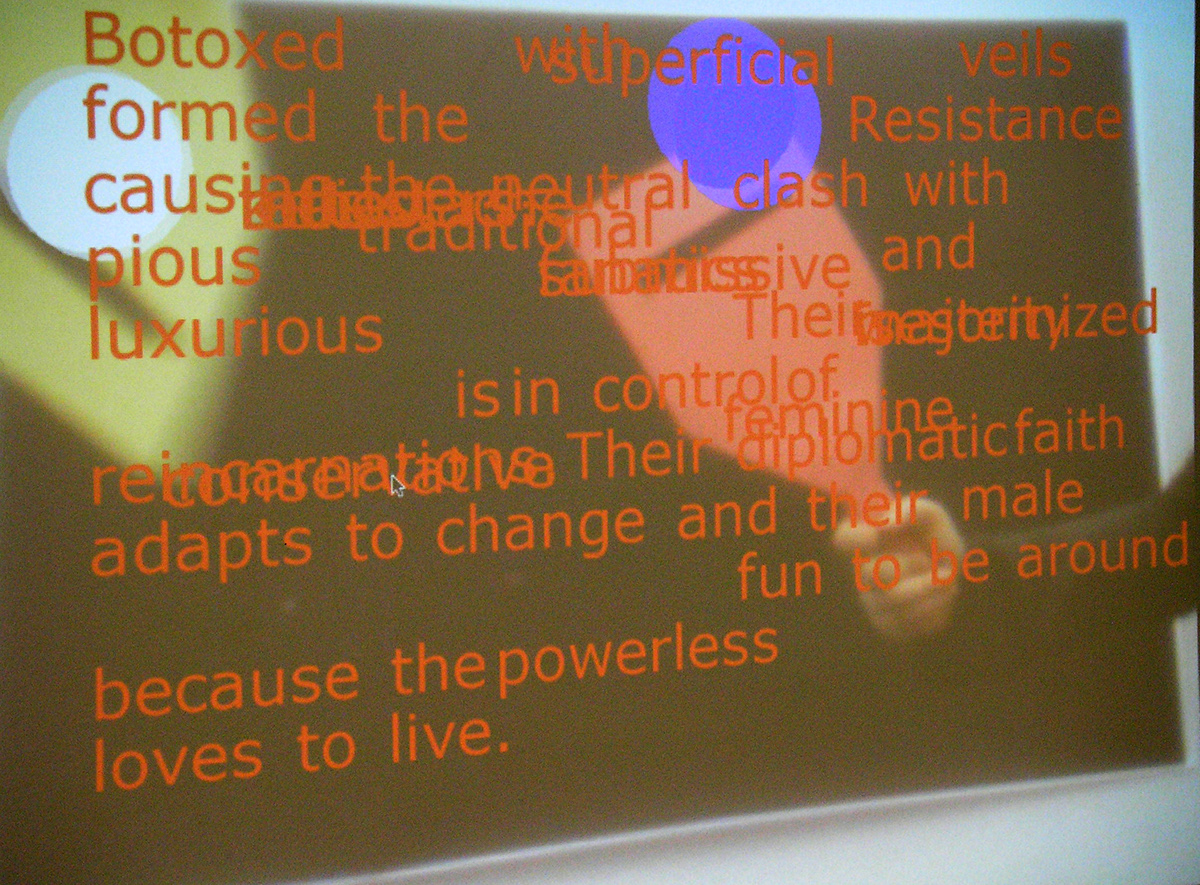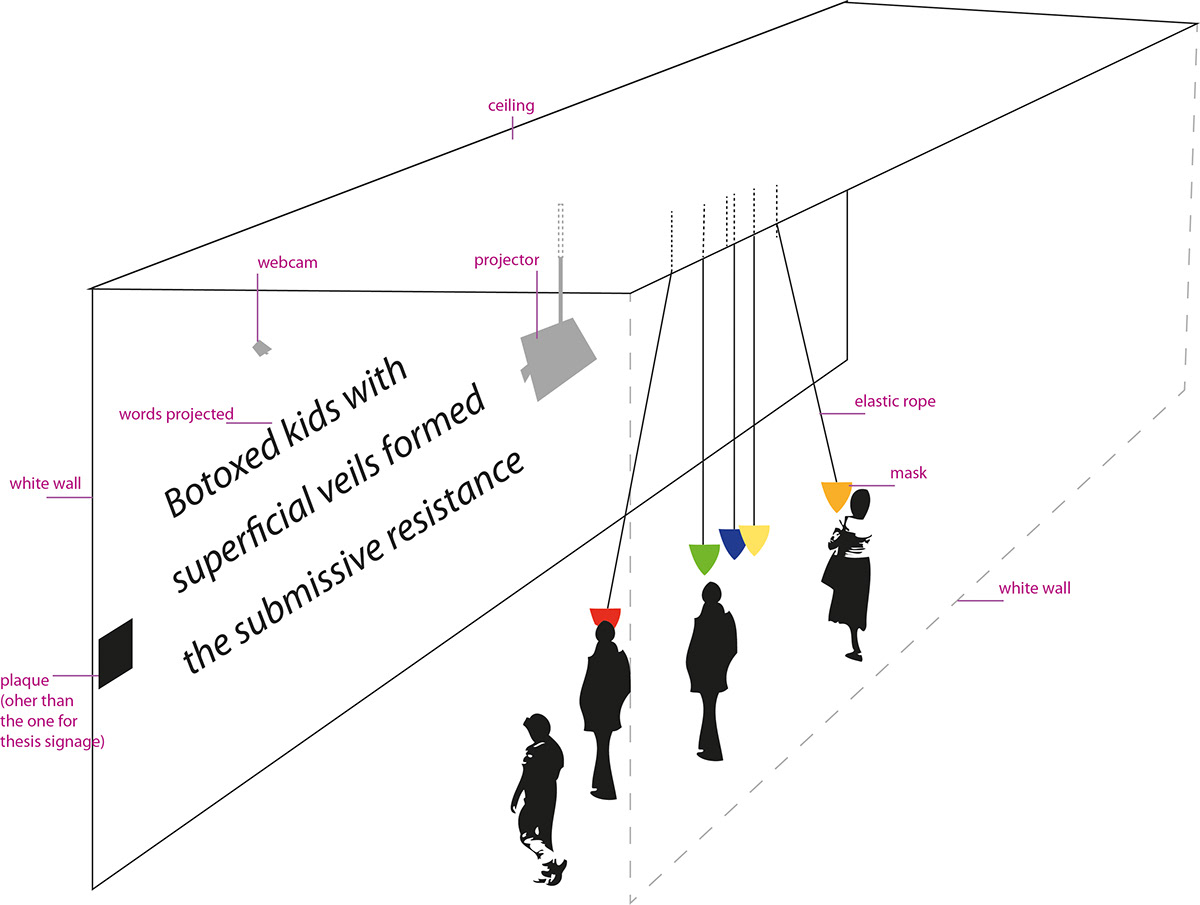ABOUT THE PROJECT
You Have Your Lebanon and I Have Mine is an interactive installation that addresses religious categorization in Lebanon, a country where people’s need to categorize others by religion has become so radical, that they constantly look for physical and cultural traits in others in order to categorize them, developing and reinforcing religious stereotypes.
With over fifteen religions, and a highly defected religious-political system, the tension between the different groups keeps aggravating. It has been over twenty-two years since the end of the Lebanese civil war, and Lebanese have not been able yet to write a common story for that period. The hostility has reached every social context to the point where the first thing one would want to find out about another is his or her religion.
The narrative in the project is constructed by reassembling the results of a survey in which Lebanese were asked to list words they associated with different religions in Lebanon. The project proposes the new narrative as the last chapter of Lebanese history, one that we’ve been writing since 1943.
The installation deconstructs the logic of language to reveal the absurdity of the categorization. Different stereotypes are associated to reveal the signified of each word as having a meaningless quality. The project allows users to take on different religious and political identities, and change the narrative to create their own reading of their identity. It subverts the stereotypes that the categorization entails, providing users with an immersive experience.
With over fifteen religions, and a highly defected religious-political system, the tension between the different groups keeps aggravating. It has been over twenty-two years since the end of the Lebanese civil war, and Lebanese have not been able yet to write a common story for that period. The hostility has reached every social context to the point where the first thing one would want to find out about another is his or her religion.
The narrative in the project is constructed by reassembling the results of a survey in which Lebanese were asked to list words they associated with different religions in Lebanon. The project proposes the new narrative as the last chapter of Lebanese history, one that we’ve been writing since 1943.
The installation deconstructs the logic of language to reveal the absurdity of the categorization. Different stereotypes are associated to reveal the signified of each word as having a meaningless quality. The project allows users to take on different religious and political identities, and change the narrative to create their own reading of their identity. It subverts the stereotypes that the categorization entails, providing users with an immersive experience.
The installation was exhibited at D12 gallery at Parsons, the New School for Design [May3-19]
Read more about the project: http://tamaracmakarem.wordpress.com/
HOW IT WORKS
The code is built in OpenFrameworks. The project is powered by a camera that detects the color of the banners users are holding, as well as their position in relation to the narrative projected on the wall in front of them. When users position the banner over one of the words in the narrative, the word changes based on the stereotype associated with that political/religious group.
PRESENTATION OF THE PROJECT AND PANEL DISCUSSION WITH PROFESSOR CHRISTIANE PAUL
The presentation is followed by a panel discussion with Professor Chrisitane Paul, a scholar in the field of digital art and a historian of art and technology.
ENGAGING NON LEBANESE USERS
Since the project was exhibited in New York, many users were not Lebanese. It was very important for the project to be lucid not only to Lebanese users. I chose to use sarcasm as a way to engage non Lebanese users, and to present to them a guide/tutorial for the religious and political system in the Lebanon.

SNAPSHOTS FROM THE INSTALLATION



Users interacting with the Installation at the D12 gallery at Parsons, the New School for Design.
PREVIOUS PROTOTYPES AND USER TESTING
First prototype: Proof of concept.
The prototype shows a model of the installation setting, where Users select a mask based on their political affiliation. The mask triggers sound and a visual projection of the content on the adjacent wall.

Testing a conceptual prototype: The prototype is inspired by the board game Cluedo. Six Users were assigned different political and religious identities. They asked questions about other Users' origins and family names to find their identities. In Lebanon, a person's family name, place of origin, etc. are very strong indicators of religious and political identity.

Prototype: The banner allows Users to move the words.

Prototype testing the ideal time period before the narrative changes.



Testing a prototype at PLAYTECH SATURDAY.

Prototype of the installation space.

Testing the ideal distance between the elements to synchronize the position of the banners/Users with the projected words on the wall.


BEHIND THE THE SCENES
Brainstorming...
Preparing the masks.

Testing the color detection and the camera in the installation space with the lighting.

Painting the tablet white to avoid interference with the color detenction.

